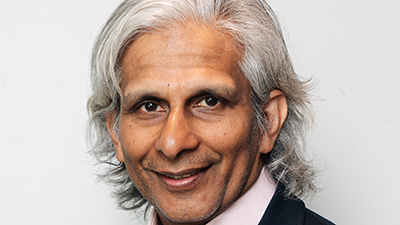On February 9, Santander and NatWest announced completion of a pilot issue of a plain-vanilla, fixed-rate sterling bond tokenized on Ethereum, the most prominent blockchain for securities as programmable smart contracts and for decentralized finance (DeFi).
NatWest was the issuer and dealer with Santander – a regular participant in pilot new issues on blockchain – the investor.
This was a so-called cross-chain transaction, a breakthrough with payment away from Ethereum on a second network, a test version of the Fnality Payment System (FnPS).
Fnality is on course to launch its first FnPS into live production in October 2022, enabled by the Bank of England’s new omnibus account. It should allow near instant payment in securities markets, which in this case, enabled same-day settlement of the bond.
Today, secondary bond markets settle two days after trade date (T+2), while primary markets can have even longer gaps between investors confirming orders and then paying for and receiving bonds.
Launching a new systemically important payment system is not a straightforward task. This pilot demonstrates that we are on track with the business plan
Rhomaios Ram, Fnality
“Launching a new systemically important payment system is not a straightforward task,” Rhomaios Ram, chief executive of Fnality, tells Euromoney. “This pilot demonstrates that we are on track with the business plan and that as well as wholesale payment versus payment, Fnality can also provide payment versus delivery.
“What’s more, market participants can efficiently deploy their liquidity across different networks, with settlement coordinated between the bond on a separate chain from the cash.”
Many blockchains
The official announcement states that the payment leg was settled in a test central bank money-backed digital asset. In plain English, Ram explains: “A participant can lock funds into a central bank account and send them wherever needed via the FnPS, without having to transfer cash onto a second intermediary’s balance sheet to pay for bonds, or a third intermediary’s to pay for equities.”
Ram says that this means wholesale markets do not have to transfer onto a single blockchain. “They can operate on many blockchains that are interoperable while allowing the same efficiency as if they were one network.”
Fnality worked with Adhara, a software company that provides multi-currency liquidity management and international payment solutions, to facilitate the payment leg. It also partnered with Nivaura, a fintech that provides workflow automation technology for primary markets and that enabled integration with Ethereum for creating the security token.
Fnality is a consortium of global banks building regulated payment rails to support the growing adoption of tokenized assets and marketplaces.
The single biggest saving for banks will probably be the cost of float
Scott Eaton, Nivaura
Scott Eaton, chief executive of Nivaura, tells Euromoney: “The single biggest saving for banks will probably be the cost of float, often for five days in the new issue market between trade date and settlement, which is becoming more painful in a high inflation world. Capital is also tied up in clearing and settlement of new issues, including against counterparty credit as well as operational risks. That capital can be released when we have immediate settlement.”
The banks get this. Fnality’s founding shareholders are Banco Santander, BNY Mellon, Barclays, CIBC, Commerzbank, Credit Suisse, ING, KBC Group, Lloyds Banking Group, Mizuho Bank, MUFG Bank, Nasdaq, State Street Corporation, Sumitomo Mitsui Banking Corporation and UBS.
John Whelan, managing director of digital assets at Santander, says: “The benefits of programmable digital securities can be maximized by incorporating programmable digital cash for settlement and the entire post-trade lifecycle, leading to many efficiency gains and bringing enormous amounts of innovation to the capital markets.”
Spinning wheels
However, banks seem to be stuck in an endless cycle of proofs of concept for new issues on blockchain. The World Bank did a first Australian dollar deal in 2018. Nivaura handled one for Santander in 2019. Euromoney recognized the EIB’s €100 million two-year issue on Ethereum and settled in CBDC through a test with the Banque de France last April as our innovation of the year for 2021.
The wheels seem constantly to be spinning on the runway but new issues on blockchain have yet to take flight.
The problem is not that the technology cannot do bond new issues much faster and more efficiently. Rather, it is that the current intermediated financial market model is not set up for a protocol-based infrastructure
Rhomaios Ram, Fnality

Ram says: “All this has been technically feasible for some time now. The problem is not that the technology cannot do bond new issues much faster and more efficiently. Rather, it is that the current intermediated financial market model is not set up for a protocol-based infrastructure.”
A network effect is yet to be built. If some advanced investors are set up with wallets and order management systems that can buy bonds issued on blockchains but other investors are not, then that potentially reduces liquidity and adds operational complexity.
“We still don’t see demand from the buy side for this as the process for primary markets – and until we get that, we are stuck testing the process to make sure it works,” says Eaton. “But after the EIB deal and in the days since this latest transaction we are now fielding calls from more market participants who would like to talk about next steps in tokenization of securities.”
Perhaps one driver will be the increasing difficulty of managing new issues in a rising rate environment when primary markets might shut down at any moment. It reduces risk if deals can be launched and settled on the same day.
“Anything that takes longer than it needs to leaves you at risk of a deal not happening at all or happening only at a much higher price,” says Eaton.
Issuers may still need to market their credit story to investors and sound out demand. But instead of taking days, then executing a deal can be very fast.
“Once sterling in the investor’s digital cash wallet is ear-marked for payment, the confirmation of the earmark triggers the asset settlement on Ethereum, while payment settles on Fnality,” Vic Arulchandran, co-founder of Nivaura, tells Euromoney. “Depending on how much is paid for a transaction on Ethereum, it can take up to a few minutes to mine.”
With primary issues happening faster, it remains to be seen what other new forms of financial market activity might then spring up: perhaps intraday liquidity provision – rather than the present shortest term of overnight lending – as well as intraday repo and FX swaps.
Central depositaries
There is, though, another complexity here. Most new issues on blockchain so far have been private placements. Publicly listed securities require settlement through a central securities depository (CSD). The role of CSDs in the move to a same-day new issue process on blockchain is unclear. Are they a chokepoint that might be removed from the process by new technology allowing near instant settlement? Or could they make themselves central to the new technology and even replace other intermediaries?
To appease regulators, early tests of new issues on distributed ledger technology were mostly conducted on private permissioned blockchains, often run on R3’s Corda platform and with CSDs still playing a role.
The latest testing of new issues on public blockchains shows that deals can be completed in compliance with regulations, for example only allowing white-listed investors to buy and hold bonds.
There’s not much debate left to be had on the risks to the financial system of operating on one centralized market infrastructure with a single point of failure versus operating on a decentralized one, where any network might fail, and another could step up to carry its load.
“Blockchain is a novel technology, and how it may be utilized in regulated markets remains to be seen,” says Arulchandran. “On one side are those that say market infrastructure should be decentralized to encourage competition and innovation; others say centralization allows regulatory and risk controls. Some heavily regulated market infrastructure providers are even moving further upstream to centralize activities and deal directly with issuers and investors.”
That is something for leading debt capital markets underwriters – especially those that have not yet tested new issues on blockchain – to be wary of.


